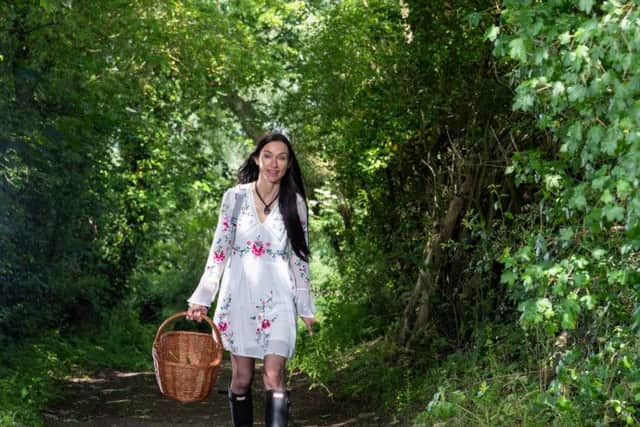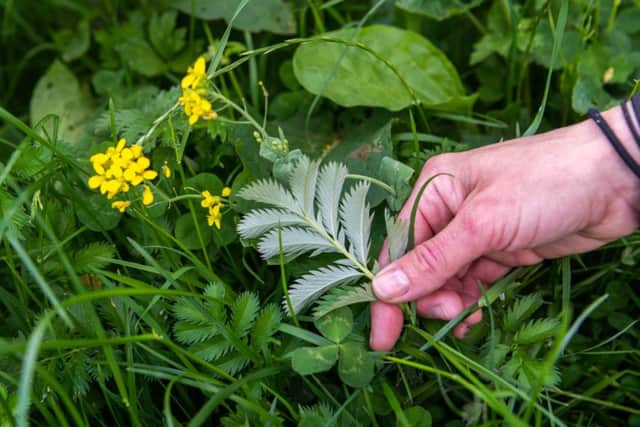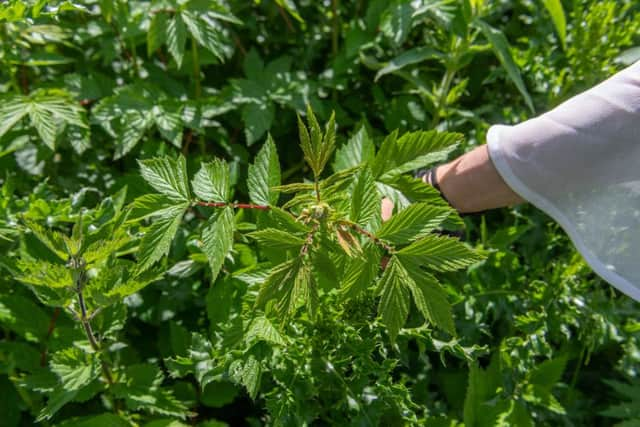Wild food: Why foraging has become part of the Yorkshire countryside experience
According to Diana Hammill, of Wild Harvest School of Self-Reliance near East Cottingwith, in East Yorkshire, who runs wild food walks and courses, there are a number of reasons for our renewed interest in foraging, not least the current economic and political uncertainty.
“We had become dumbed down by comfort, but the recent unrest caused by Brexit and, of course, fears about future food shortages resulting from climate change have made people want to future-proof their families to try to ensure that they will always be able to find enough to eat. As a nation, we produce far less of our own food than we did in the past – less than 60 per cent of what we eat. Supermarkets tend to stock only three days’ worth of food, so the threat of food shortages has suddenly become very real,” she says.
Advertisement
Hide AdAdvertisement
Hide AdDiana believes the fact that wild food is free is also another key factor, adding: “Because of the economic ups and downs that we’ve experienced during the last 15 years, people are looking to tighten their belts. There has also been a real shift towards the idea of reducing food miles, and eating seasonal, sustainable food. Taking a few leaves from the dandelion patch outside your back door is the ultimate way to eat local.


“The high nutritional content of wild food is also part of its appeal. Some of the supermarket fruit and vegetables, such as white cabbage and iceberg lettuce, are so full of water and, because some of them are in transit for up to three weeks, the nutrients have depleted further by the time we eat them.”
Although the desire to eat local has also reignited our passion for gardening and many people now enjoy growing their own produce, Diana points out that planting seeds annually can be labour intensive, whereas wild food is there waiting to be harvested.
Another, perhaps less obvious, reason for our renewed interest in gathering wild food is a deep-seated desire to reconnect with nature. Diana says: “After 20 years of being really disconnected from nature, when most of us spend a lot of our time in offices and on computers, there is something in our DNA urging us to reconnect with nature.”
Advertisement
Hide AdAdvertisement
Hide AdIf you’re thinking of heading out in search of wild food, take a pair of kitchen scissors with you and a basket to carry your haul in. If you put your ingredients in a plastic bag or container, everything you pick will end up in a bruised, sweaty heap at the bottom of it. It’s a good idea to take a pair of rubber gloves too as you’ll need to protect your hands when picking certain wild ingredients, such as nettles.


The first rule of foraging is to be completely satisfied that you’ve identified a plant correctly before tasting it. If you’re unsure, pick it anyway but keep it separate from the other wild foods in your basket until you get home, where you’ll be able to check that it’s definitely what you think it is using one of the many websites or books devoted to foraging for wild food.
Diana says: “You should check more than one reference book to identify a plant correctly and, ideally, the books should have photographs, rather than illustrations. You should also look at the type of habitat it grows in, the height of the plant and seasonality to confirm that it is what you think it is. Make use of your other senses too; touch and smell a plant before you taste it.
“Once you’ve eliminated all the variables, crush the plant up, rub it on the inside of your lip and wait half an hour. That way, you’ve had a minimal amount if you’d identified something incorrectly. If you’re OK after 30 minutes, ingest one mouthful and wait another 30 minutes. You’ll then be safe to tuck in. Start by choosing five plants and getting to know how to identify and use them really well. Then, add another five plants to your search list the following year. Look for plants close to home, that will be enjoyed by you and your family, and are easy to process.”
Advertisement
Hide AdAdvertisement
Hide AdAlways stick to public spaces or rights of way, only venturing onto private property if you have the landowner’s permission. It’s also important not to take more than you need as many plants that we enjoy eating are also an important source of food for wildlife, plus the plant needs to be able to recover and regenerate. For example, you can eat every part of Wild Garlic (or Ransoms, as it’s sometimes called), but it’s much kinder to take just the leaves and flowers, rather than digging up the plant to reach the bulb.


You should avoid foraging close to busy roads, where plants will have been exposed to fumes and dirt from passing traffic, and from around the margins of fields of arable crops, which will have been sprayed with herbicides and pesticides.
Useful contacts
If you’d like to learn more about foraging for wild ingredients, there are a number of organisations in Yorkshire offering courses and workshops, including: Wild Harvest School of Self-Reliance in East Yorkshire: www.wildharvest.orgTaste The Wild in North Yorkshire: www.tastethewild.co.uk and York Foraging Courses: www.foragingcourses.com